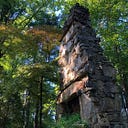Member-only story
Memorial Day and the Lee Street Massacre
Today, we celebrate Memorial Day in the United States, a day where we remember those who died serving their country. In May 1865, less than a month after the Confederacy surrendered, ending the Civil War, recently freed African Americans celebrated Decoration Day. On May 1, 1865, 10,000 people, largely formerly enslaved individuals, gathered and marched around the Charleston racetrack, commemorating the 260 Union soldiers who died when the Confederacy transformed the racetrack into a prison during the war. They marched to remember those who died so that they could be free.
As we celebrate Memorial Day, I want to expand the ways that we think about this day and its importance. When we think about Memorial Day, we think about men and women who died in combat. We do not always think about those who died before or after combat, and this is what I want to focus on today, specifically a couple of events where African American soldiers were killed not on the battlefields of World War II but on the streets of the United States as they prepared to go and fight for freedom abroad.
A month after the bombing of Pearl Harbor, Black soldiers from Camp Claiborne in central Louisiana went to the town of Alexandria on Saturday January 10, 1942, for some R&R. Most of the soldiers were from the North, and on that night, a Black soldier supposedly stepped in front of…
